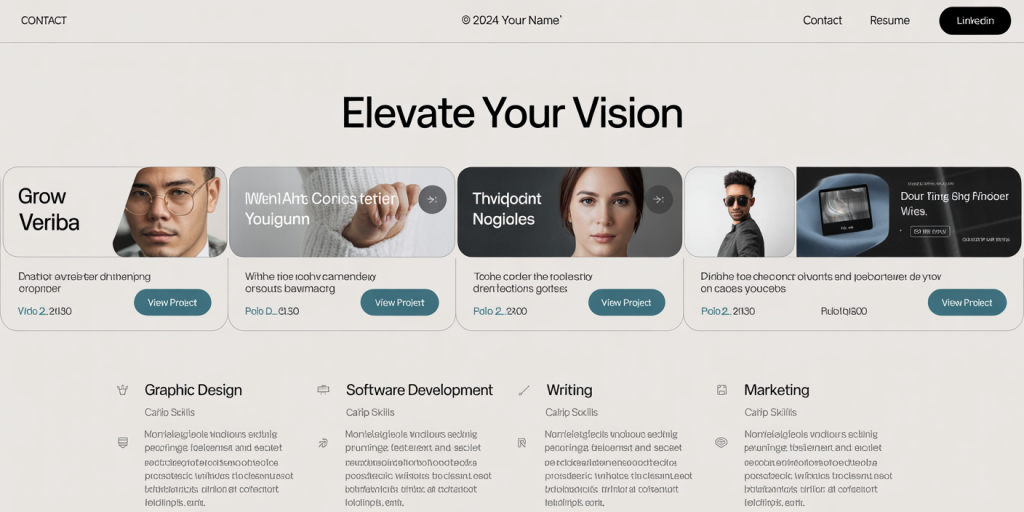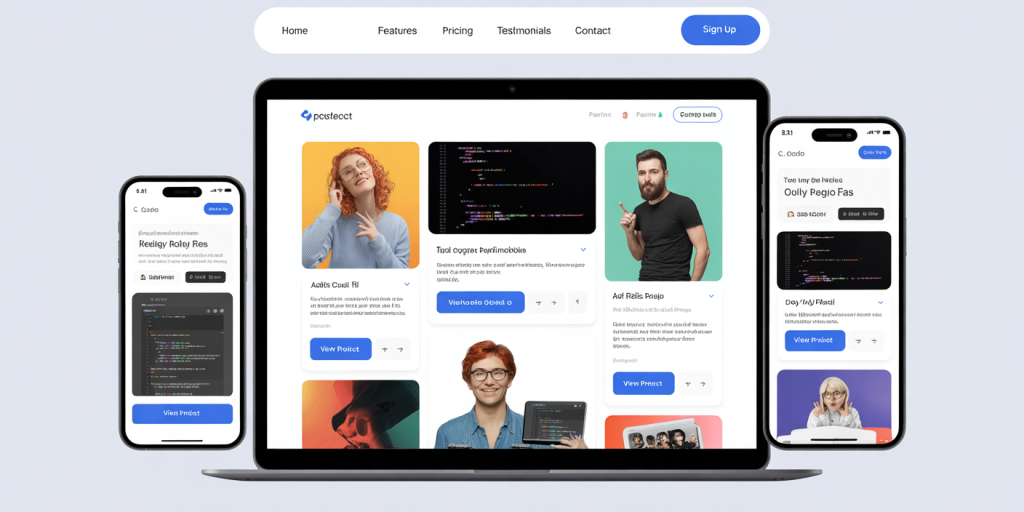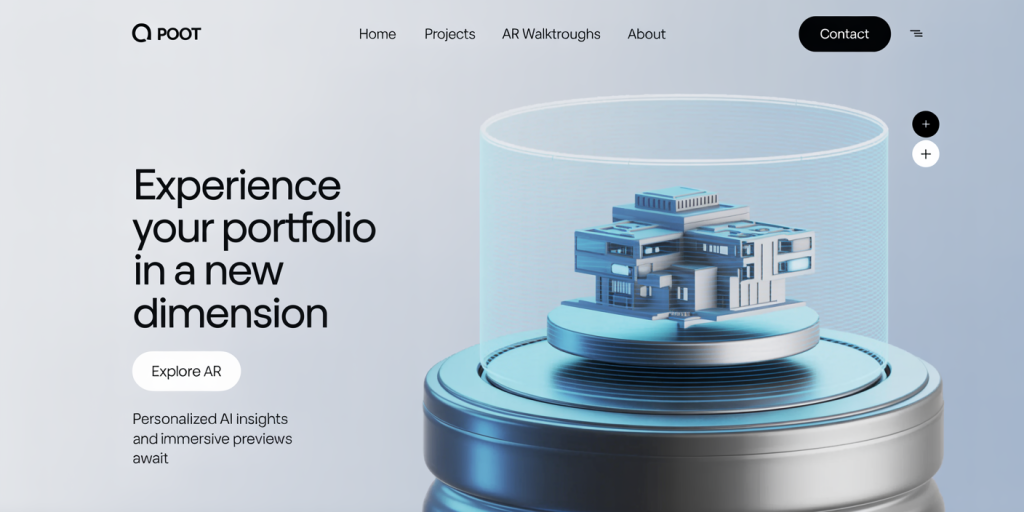How to Build a Portfolio That Gets You Hired
In today’s highly competitive job market, a well-crafted portfolio is often the deciding factor between landing an interview and being overlooked. Portfolios serve as tangible proof of your skills, creativity, and experience, offering recruiters a real insight into what you can deliver. Whether you’re a graphic designer, software developer, writer, or marketer, building a portfolio that impresses potential employers can significantly boost your chances of getting hired.
Research shows that over 70% of recruiters prefer portfolios or samples of work alongside resumes when evaluating candidates (LinkedIn, 2023). This data emphasizes the growing importance of having a portfolio that not only showcases your best work but also demonstrates your problem-solving ability and professional growth. This article explores the step-by-step process of building an effective portfolio that differentiates you from the competition and opens doors to new job opportunities.
—
Understanding the Purpose of Your Portfolio
A portfolio’s fundamental purpose is to provide concrete evidence of your skills and achievements. Unlike a resume, which offers a summarized view of your professional journey, a portfolio dives deeper into your craftsmanship. Potential employers want to see your thought process, your ability to handle challenges, and your progression over time.
Knowing your portfolio’s purpose helps tailor its content effectively. For example, a software engineer’s portfolio should emphasize coding projects, showcasing clean and efficient code, while a graphic designer’s portfolio must highlight visual appeal, variety of styles, and creativity. Ensuring your portfolio aligns with the expectations of your target industry maximizes its impact.
In addition, your portfolio acts as a storytelling tool conveying your unique professional narrative. It should answer critical questions such as: What challenges did you face? How did you solve them? What measurable results did your work achieve? Including context and outcomes for each project allows potential employers to understand your real-world contribution and problem-solving mindset.
—
Selecting Projects That Showcase Your Best Work
Choosing which projects to include in your portfolio can be daunting. Aim for quality over quantity—8 to 10 well-documented projects typically suffice to demonstrate competency without overwhelming the viewer. Each project should serve a clear purpose, highlighting different skills and experiences relevant to the roles you are targeting.
Diversity is key. Include a mixture of personal projects, freelance work, and professional assignments, if possible. For instance, a digital marketer might showcase a freelance social media campaign, an in-house content strategy, and a personal blog that demonstrates SEO skills. Each project can illustrate a distinct aspect of your skillset, presenting you as a versatile candidate.
When selecting projects, avoid outdated or incomplete works. Employers may question your commitment or skills if your portfolio contains unfinished work. Instead, focus on refined projects that not only look polished but also include your learning and adaptation process. For example, software developer Jane Doe revamped an old open-source project with new features and documented it thoroughly. This displayed not only technical proficiency but also initiative and continuous learning—a trait highly valued in the tech industry.
—
Organizing Your Portfolio for Maximum Impact
The organization and presentation of your portfolio are as important as the content itself. A neatly structured, user-friendly portfolio helps recruiters easily navigate your work and understand your capabilities. Break your portfolio down into clear sections such as “Projects,” “Skills,” “About Me,” and even “Testimonials” if available.
Start with a compelling personal summary that highlights your professional background and core competencies succinctly. Providing context early on gives evaluators a snapshot of who you are and what to expect in the following sections. This section can mirror the ‘about me’ page often found in personal websites or LinkedIn profiles.
When detailing individual projects, use a consistent format: project title, objectives, your role, technologies/tools used, process description, and outcomes. Visual aids such as screenshots, diagrams, or even short video demos can dramatically enhance understanding, especially for creative and technical fields. Consider integrating interactive elements like clickable prototypes or GitHub repositories for software projects to demonstrate transparency and technical depth.
Here’s a quick comparative table showing portfolio structures for different professions:
| Profession | Key Portfolio Sections | Recommended Media Formats |
|---|---|---|
| Graphic Designer | Projects, Skills, About, Client Reviews | Images, PDFs, Online galleries |
| Software Engineer | Projects, Skills, About, GitHub links | Code snippets, Demos, Repositories |
| Content Writer | Articles, Blogging Samples, About, Testimonials | Text samples, PDFs, Links |
| Digital Marketer | Campaigns, Analytics, About, Case Studies | Presentations, Infographics, Videos |
—


Leveraging Digital Platforms to Amplify Your Reach
In the digital age, having an online portfolio amplifies your visibility and accessibility. Hosting your portfolio on dedicated platforms such as LinkedIn, Behance, GitHub, or personal websites allows recruiters to access your work anytime and from anywhere. According to Jobvite’s Recruiting Benchmark Report 2024, online portfolios increase the likelihood of being contacted by employers by 57%.
Choosing the right platform depends on your industry and the type of work you produce. For instance, designers often prefer Behance or Adobe Portfolio, developers opt for GitHub or personal websites, while content creators might leverage Medium or personal blogs.
Building a personal website offers the most customization and control. Modern tools like WordPress, Wix, or Squarespace enable users with little coding knowledge to create professional portfolios. Furthermore, optimizing your portfolio website for search engines using keywords related to your skills and industry improves organic traffic, expanding your reach.
Importantly, ensure seamless mobile compatibility, as over 60% of recruiters access candidate portfolios on mobile devices (Glassdoor, 2023). Fast loading speeds, intuitive navigation, and responsive design enhance user experience and keep potential employers engaged longer.
—
Showcasing Results and Impact Through Data
Data-driven storytelling strengthens your portfolio’s credibility by demonstrating measurable results from your work. Numbers provide compelling evidence that you deliver value beyond aesthetics or code functionality. Including statistics related to your projects catches the eye of data-oriented recruiters and decision-makers.
For example, a digital marketer can highlight how a campaign increased website traffic by 40% in 3 months or boosted conversion rates by 25%. A software developer might quantify how their new feature reduced load time by 50% or decreased system errors by 30%. Even writers can emphasize engagement metrics like average reading time, social shares, or SEO ranking improvements.
If exact figures are unavailable, estimate conservatively and explain the methodology you used. Highlighting the impact—whether it’s revenue growth, time savings, customer satisfaction, or enhanced user experience—demonstrates your understanding of how your contributions align with broader business objectives.
—
Future Trends in Portfolio Building: What to Expect
The landscape of portfolio building is evolving rapidly with technological advancements and changing hiring practices. Going forward, portfolios will likely become more interactive, personalized, and integrated with emerging technologies such as AI and augmented reality (AR).
AI-driven personalization tools are already being integrated into portfolio platforms, enabling recruiters to view the facets of your work most relevant to their needs automatically. This could mean showcasing specific projects or skills dynamically based on the job description, saving recruiters time and increasing your chances of fitting their criteria.
Augmented and virtual reality hold potential for creative fields. Imagine architects or product designers offering immersive 3D walkthroughs of their projects or UX designers demonstrating interactive prototypes within an AR environment. These innovations could transform portfolios from static showcases to engaging experiences.

Moreover, soft skills and cultural fit are gaining prominence. Incorporating video introductions, testimonials, or case studies that highlight collaboration and problem-solving under pressure can make a significant difference. Future portfolios might also blend with professional networks and endorsements in more integrated ways, merging personal branding with authentic social proof.
In summary, staying adaptable and continuously updating your portfolio to incorporate new trends and tools will keep you ahead in the job market.
—
By carefully selecting projects, optimizing your portfolio’s presentation, leveraging data, and embracing emerging digital tools, you can create a portfolio that truly sets you apart. In a competitive hiring landscape, showcasing not only what you have done but how it impacted results makes all the difference. Building a portfolio is an ongoing process—commit to refining and updating it regularly to reflect your evolving skills and professional story. The right portfolio doesn’t just get you a job; it opens the door to the career you aspire to build.
